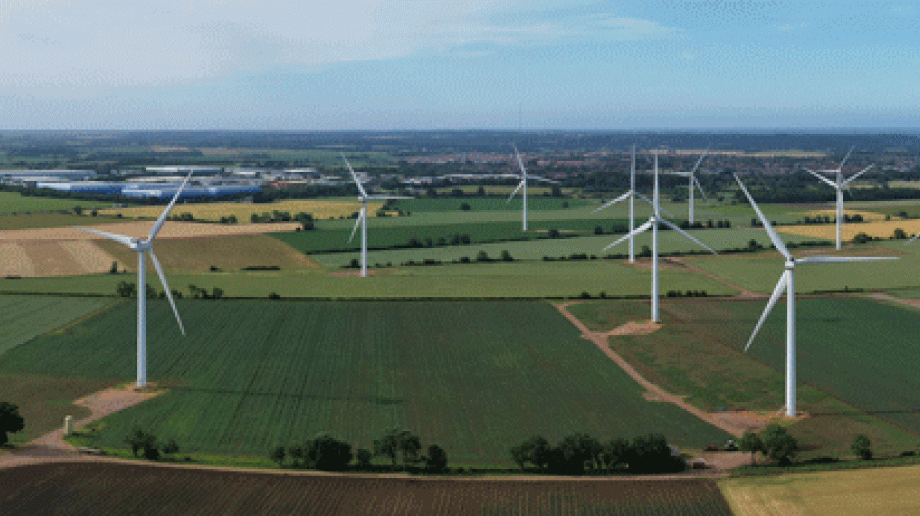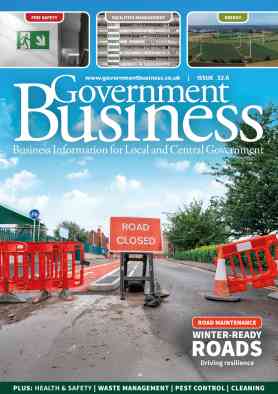
Why are renewables a smart investment?
Renewables are now the cheapest source of new power, making them a smart investment for the public sector. Frank Gordon, director of policy at the Renewable Energy Association, explains how technologies like rooftop solar, heat pumps and microgrids can cut costs, boost resilience and help meet carbon targets
Britain’s public estate: our schools, hospitals, local authorities, and defence sites are some of the nation’s biggest energy consumers. With wind and solar now the cheapest forms of new power generation, renewables offer the public sector a way to generate affordable energy locally and cut emissions. Incentives such as the Smart Export Guarantee (SEG) can deliver returns of around 10 per cent a year on rooftop solar, turning sustainability into a smart financial move.
GB Energy
The launch of GB Energy signals a major push in this direction. With £30 million already set aside to kick-start public sector projects and a total budget approaching £8 billion, the initiative will help schools, hospitals, and defence estates install renewable technologies from solar PV to low-carbon heating, thereby reducing operational costs and future-proofing critical infrastructure. For critical facilities like hospitals, emergency services, and defence sites, maintaining power during disruptions is about more than savings; it’s about safety.
While solar remains the most familiar option, it’s far from the only one. NHS Trusts are already exploring geothermal heat networks that tap into natural underground warmth, while councils and schools are turning to air-and ground-source heat pumps. In rural areas, biomass boilers, bio-LPG, and biomethane are proving practical renewable heating alternatives.
For electricity, direct private-wire connections to nearby wind farms, energy-from-waste plants, or anaerobic digestion sites are gaining momentum. Where on-site generation isn’t viable, virtual power purchase agreements (PPAs) let organisations buy clean electricity directly from UK renewable projects, locking in price certainty and guaranteed carbon reductions.
Technology
To get the most from these technologies, renewables should be deployed alongside energy efficiency and smart clean tech. Demand reduction through LED lighting, improved building fabric, and intelligent energy management systems means smaller installations can go further. Layering in smart controls such as building management systems, smart meters, and demand-response platforms helps sites synchronise energy use with renewable generation and take advantage of new time-of-use tariffs that reward off-peak consumption. Thermal energy storage, from hot-water tanks to phase-change materials, adds another dimension, storing renewable heat for use when it’s needed most.
For larger sites, the next step is the microgrid: a self-sufficient local energy system that integrates renewables, battery storage, EV charging, and smart controls. Microgrids can balance generation and demand in real time, ensuring stable, low-cost power even when the wider grid is under stress. With battery costs falling and new tariff models emerging, the case for local storage has never been stronger.
Amid ongoing energy price volatility, one fact remains constant: the UK’s long-term costs are still dictated by global gas prices, which account for 45 per cent of domestic bills. Renewables offer the clearest route to insulation from that volatility. Once installed, they produce predictable, low-cost energy with no imported fuel, no emissions, and no exposure to global market shocks, strengthening both the UK’s energy security and its balance sheet.
Most public sector organisations already have carbon reduction targets, and renewables remain one of the most direct and measurable ways to meet them. The Government’s independent Climate Change Committee consistently highlights local renewable generation and low-carbon heating as foundations of the UK’s decarbonisation pathway. By installing renewables, public sector bodies aren’t just saving money - they’re showing leadership.
About the REA (Renewable Energy Association)
The REA is the UK’s largest trade association for renewable energy and clean technologies with over 400 members operating across heat, transport, power and the circular economy. The REA is a not-for- profit organisation representing 14 sectors, ranging from composting, biogas and renewable transport fuels to solar, storage and electric vehicle charging. Membership ranges from major multinationals to sole traders, giving the organisation a unique perspective on the challenges and opportunities facing the sector. The REA is one of only two UK energy trade associations with official observer status to the UNFCCC, enabling it to provide Blue Zone accreditation at COP30 and to represent UK clean energy on the international stage.


